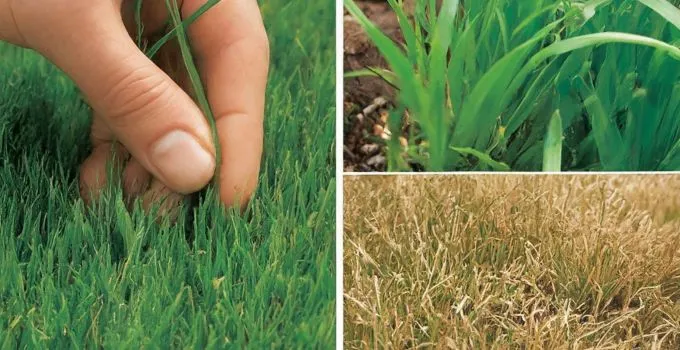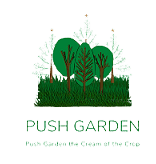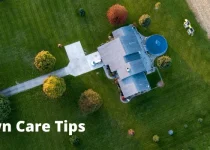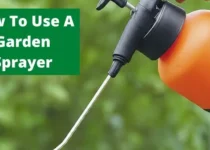How To Get Rid Of Crabgrass Without Chemicals?
Natural Strategies for a Crabgrass-Free Lawn:
Crabgrass, that pesky summer weed with its distinctive “crab-like” growth habit, can quickly take over your lawn, leaving it unsightly and unhealthy. But before you reach for the chemical herbicides, consider these natural and eco-friendly methods to conquer crabgrass:

1. Prevention is Key:
- Healthy Lawn: A lush, thriving lawn is the best defense against crabgrass. Ensure your lawn receives adequate sunlight, water, and nutrients.
- Proper Mowing: Mow your lawn regularly, leaving the grass clippings on the lawn to act as a natural fertilizer. A height of 2-3 inches is optimal, as it shades out weed seedlings.
- Overseeding: In early fall, overseed your lawn with a cool-season grass variety to thicken the turf and outcompete crabgrass.
- Mulch: A 2-3 inch layer of organic mulch around your garden beds can help prevent crabgrass seeds from germinating.
2. Manual Removal:
- Hand-pulling: While tedious, hand-pulling is the most environmentally friendly way to remove crabgrass. Get the entire plant, including the roots.
- Hoeing: For larger infestations, a hoe can be used to cut the crabgrass plants at the soil line. Be careful not to damage your desirable lawn grass.
3. Natural Weed Control:
- Boiling Water: Pour boiling water directly onto the crabgrass plants, ensuring the roots are completely saturated. This method kills the plants quickly.
- Vinegar: Apply undiluted white vinegar directly to the crabgrass plants, covering the leaves and stems thoroughly. It may take multiple applications for complete eradication.
- Corn Gluten Meal: This natural product, a byproduct of corn processing, acts as a pre-emergent herbicide, preventing crabgrass seeds from germinating. Apply it in early spring before crabgrass starts to sprout.
- Compost Tea: Compost tea, a nutrient-rich liquid made from composting organic matter, can help improve soil health and outcompete weeds. Apply it regularly to your lawn.
4. Consider Your Soil:
- Soil Testing: Understand your soil’s pH level and nutrient content. Crabgrass thrives in acidic, compacted soils. Adjust the pH with lime, if necessary, and aerate your lawn to improve drainage.
- Healthy Soil: Enrich your soil with organic matter, such as compost or aged manure. This will improve soil structure and encourage healthy lawn growth, making it harder for crabgrass to thrive.
5. Persistence is Key:
- Regular Inspections: Keep a watchful eye on any new crabgrass seedlings. Remove them immediately before they have a chance to spread.
- Watering Deeply: Deep watering encourages healthy root systems, making your lawn more resistant to weeds. Water deeply but less frequently.
While eliminating crabgrass entirely may be a challenge, with consistent effort and a combination of these natural methods, you can significantly reduce its presence in your lawn. Remember, patience and perseverance are key! By embracing these eco-friendly approaches, you can enjoy a healthy, lush lawn without resorting to harmful chemicals.
Advanced Strategies for Crabgrass Control:
While the previous methods provide a solid foundation for controlling crabgrass, certain situations may require more targeted and advanced approaches. Here are some additional strategies to consider:
1. Targeted Weed Control:
- Hand Weeding Tools: For smaller infestations, specialized tools like a weed puller or a weeding knife can be highly effective in removing crabgrass without disturbing surrounding grass.
- Flame Weeding: A propane torch can be used to quickly burn away crabgrass plants. However, use caution as this method can be dangerous if not done correctly.
- Solarization: Covering the infested area with clear plastic sheeting for several weeks can heat the soil, killing weed seeds and existing plants. This is especially effective in warmer climates.
2. Leveraging Natural Enemies:
- Beneficial Insects: Some beneficial insects, like ladybugs, can help control crabgrass by feeding on aphids and other pests that can damage your lawn. Encourage these insects by planting beneficial plants in your garden.
- Fungi: Certain fungi, like Trichoderma spp., can suppress the growth of crabgrass and other weeds. These fungi are available commercially as biological control agents.
3. Specialized Lawn Care Practices:
- Aerating: If your soil is compacted, aerating it can improve drainage and allow for better root growth, making your lawn more resistant to crabgrass.
- Topdressing: Adding a thin layer of topsoil or compost to your lawn can help improve soil fertility and encourage thicker turf growth.
- Thatching: Excessive thatch buildup can create a favorable environment for crabgrass. Remove thatch using a dethatching rake or a power dethatcher.
4. Consider Your Location and Climate:
- Local Expertise: Consult with local experts, such as a master gardener or a lawn care professional, to understand the specific challenges and best practices for your region.
- Climate-Specific Solutions: Some methods, like solarization, are more effective in warmer climates, while others, like overseeding with cool-season grasses, are better suited for cooler regions.
5. Ongoing Management:
- Regular Monitoring: Keep a close eye on your lawn, especially during the spring and summer months when crabgrass is most active. Remove any new seedlings promptly.
- Adaptive Strategies: Don’t be afraid to experiment with different methods and adjust your approach based on the results. What works best for one lawn may not be the most effective for another.
By implementing these advanced strategies, you can take your crabgrass control efforts to the next level and enjoy a healthy, weed-free lawn that thrives. Remember, a combination of preventative measures, manual removal techniques, and natural control methods will be most effective in the long run.



